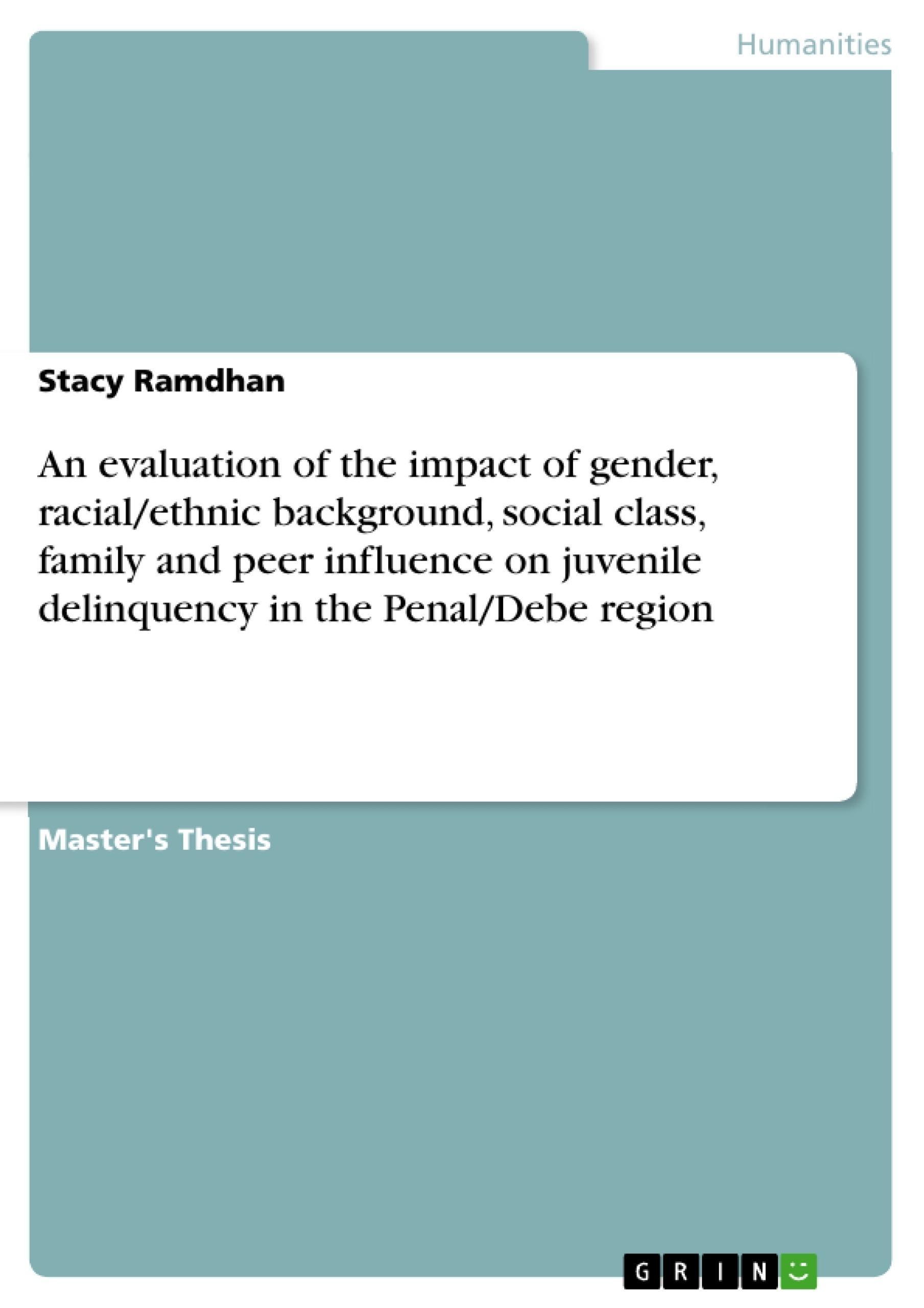Theoretical Analysis/Framework of 'An evaluation of the impact of gender, racial/ethnic background, social class, family and peer influence on juvenile delinquency in the Penal/Debe region'. This chapter is intended to explain the various theories which explore the gender-delinquency relation, racial/ethnic-delinquency relation, social class-delinquency relation, family-delinquency relation and the peer-delinquency relation.
Inhaltsverzeichnis (Table of Contents)
- Theorizing the gender-delinquency relationship
- Theorizing the race/ethnicity delinquency relationship
- Theorizing the social class-delinquency relationship
- Theorizing the family-delinquency relationship
- Theorizing the peer-delinquency relationship
Zielsetzung und Themenschwerpunkte (Objectives and Key Themes)
This thesis examines the impact of various social factors, including gender, racial/ethnic background, social class, family influence, and peer influence, on juvenile delinquency in the Penal/Debe region. It seeks to understand how these factors contribute to delinquent behaviors among young people in this specific geographical location.
- Gender differences in delinquency
- The role of race and ethnicity in delinquency
- Social class and its relationship to delinquent behavior
- The influence of family dynamics on delinquency
- The impact of peer groups on juvenile delinquency
Zusammenfassung der Kapitel (Chapter Summaries)
-
Theorizing the gender-delinquency relationship
This chapter explores the historical and contemporary perspectives on gender differences in delinquency. It examines biological, psychological, and social theories that attempt to explain why males and females may exhibit different levels of delinquent behavior. The chapter discusses the influence of factors such as hormonal imbalances, socialization patterns, and societal expectations on gender-related delinquency. -
Theorizing the race/ethnicity delinquency relationship
This section delves into the relationship between racial/ethnic background and delinquency. It discusses theories that explain the overrepresentation of certain racial and ethnic groups in the juvenile justice system. The chapter explores the impact of systemic racism, cultural factors, and socioeconomic disparities on delinquency rates among different racial/ethnic groups. -
Theorizing the social class-delinquency relationship
This chapter focuses on the association between social class and delinquent behavior. It examines theories that link socioeconomic status to delinquency, including strain theory, social disorganization theory, and cultural deviance theory. The chapter analyzes how factors such as poverty, lack of opportunity, and social isolation may contribute to delinquency among young people from lower socioeconomic backgrounds. -
Theorizing the family-delinquency relationship
This section examines the influence of family dynamics on juvenile delinquency. It explores theories that emphasize the importance of family structure, parental involvement, and communication patterns in shaping delinquent behavior. The chapter discusses the impact of factors such as family conflict, parental neglect, and abuse on delinquency rates. -
Theorizing the peer-delinquency relationship
This chapter investigates the role of peer influence in juvenile delinquency. It examines theories that emphasize the importance of peer group dynamics, social learning, and differential association in shaping delinquent behavior. The chapter discusses how peer pressure, delinquent subcultures, and gang involvement can contribute to delinquency.
Schlüsselwörter (Keywords)
This thesis focuses on the crucial concepts of juvenile delinquency, gender, race/ethnicity, social class, family influence, peer influence, and theoretical frameworks. It explores the complex interplay of these factors in shaping delinquent behaviors among young people in the Penal/Debe region.
- Quote paper
- BSc, MSc Stacy Ramdhan (Author), 2011, An evaluation of the impact of gender, racial/ethnic background, social class, family and peer influence on juvenile delinquency in the Penal/Debe region, Munich, GRIN Verlag, https://www.grin.com/document/180775



